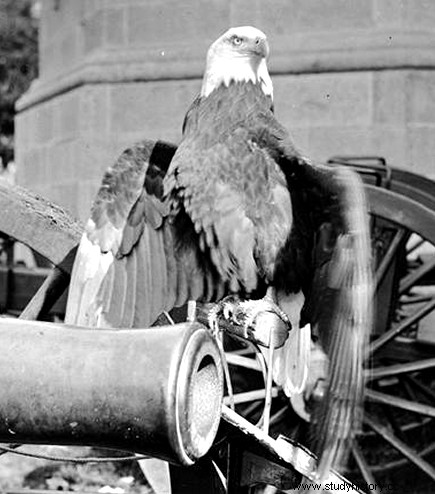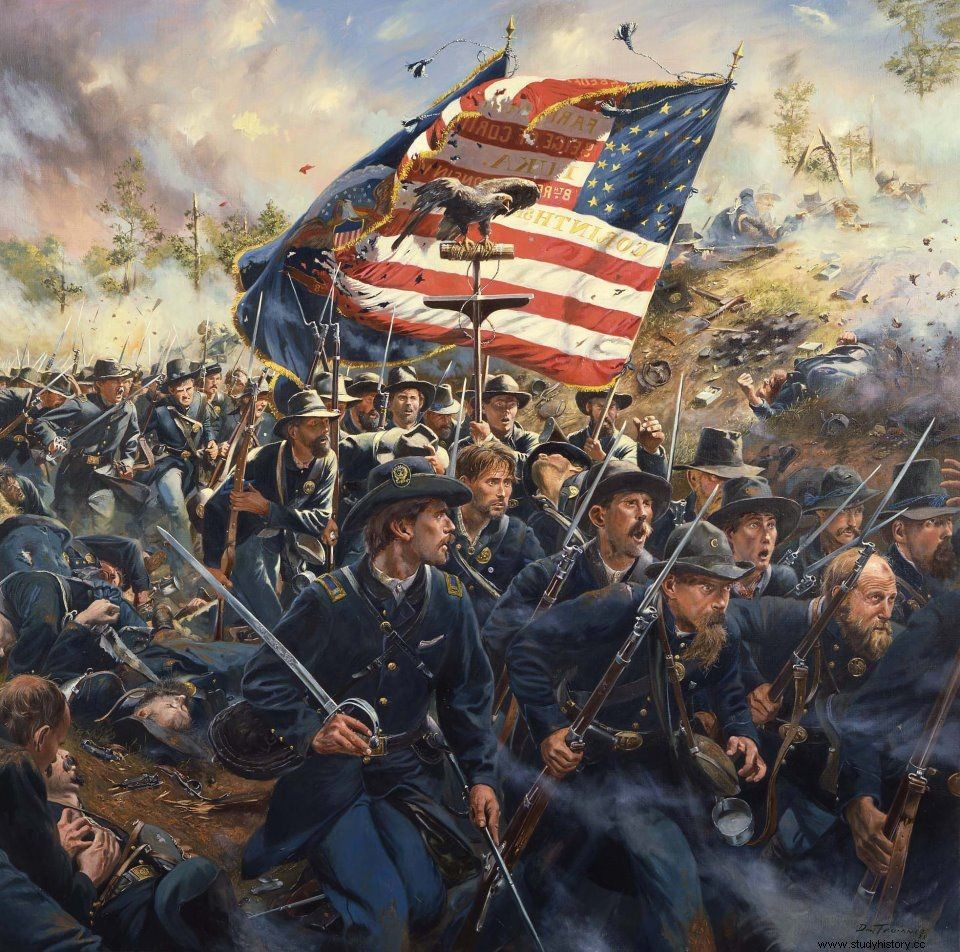The bald eagle, known for its tail and head of white feathers (which is not bald), is the proud national bird symbol of the United States, and has been present on its shield since 1782 when it was chosen to faithfully represent the image that the young woman wanted to project. nation:power and majesty. Hypocrisies of life, was on the verge of extinction in that country for decades because of pesticides such as DDT -it was deposited in the fish they ate and weakened the shells of their eggs, seriously limiting their ability to reproduce- and because they were hunted by sport and to 'protect' fishing grounds. Since the restriction of the use of DDT in 1972 and the reintroduction programs, the eagle population has made a remarkable resurgence. Today we will talk about the most famous mascot of the Civil War:the bald eagle Old Abe which, since 1921, is part of the emblem of the 101st Airborne Division of the US Army.

When he was still a boy, the one who would later become the Indian chief Big Sky of the ojibwa , after dealing with the mother managed to steal two small chicks from a nest of bald eagles in the spring of 1861. One of them fell from his hands while descending from the rocks, the other managed to survive and was fed for several weeks. One day he decided to accompany his father, the boss Thunder of Bees , on one of his trips to the white man's city to trade their furs for food and took his pet. When Daniel McCann he saw her, took a fancy to her and offered the young man a sack of corn. It was too much food to think about. He traded her for the corn and Daniel took her to Eau Claire (Wisconsin), where he lived with his family. While the eagle was young he was funny and they kept him in a kind of wooden cage made from a barrel, but he grew up. Space was already a problem for this little eagle turned eagle, and so was the food he ate daily. So, Daniel decided to sell it. After many attempts to get rid of the bird, he managed to "place" it for $2.50 on Captain John Perkins , commander of a local militia company, making her the unit's mascot. When Perkins' unit entered federal service it was integrated into the Union Army's 8th Wisconsin Volunteer Infantry Regiment. The integration was total, since Old Abe , named after President Abraham Lincoln - he was called Abe since childhood - became the mascot of the entire regiment.

As a banner, on a kind of falconry perch, she accompanied her new friends. He watched the bloodiest battles, Vicksburg and Corinth, and became a symbol for the troops during the battle. In the midst of the fighting, Old Abe would fly over the battlefield emitting shrieks that gave courage to the Eagle Regiment , which is how they nicknamed his unit. Many Confederate soldiers tried to shoot her down or capture her but only managed to fleece her on occasion. Confederate General Sterling Price commented…
You have to catch or kill that bird. I'd rather have that eagle than capture an entire brigade or a dozen battle flags.

When the war ended, she returned to Wisconsin with her family and was exhibited at multiple events and celebrations. She was subsequently recruited by the United Sanitary Commission to tour the country and raise funds for the families of deceased soldiers and wounded veterans. After the tour, she fixed her place of residence at The Wisconsin State Capitol in Madison (capital of Wisconsin). In 1881 a fire broke out in a warehouse near her aviary. A month later, war eagle Old Abe, weakened by smoke inhalation, died in the arms of her caretaker. Upon her death, her body was dissected and displayed at the Grand Army of the Republic Memorial Hall until a fire destroyed it in 1904. Unfortunately, only a few feathers were saved, carefully preserved today in the Madison Veterans Museum.
